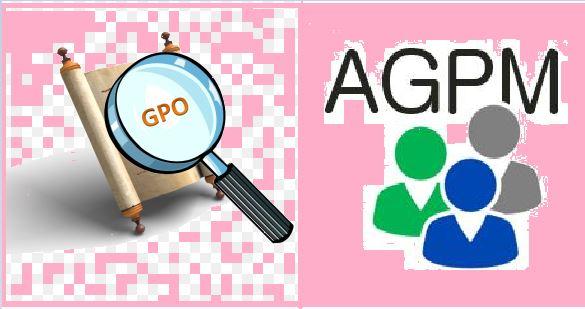Best Practices for Version Control in AGPM
Hello All,
Hope this post finds you in good health and spirit.
This post is regarding what are the Best Practices for Version Control in AGPM.
Best Practices for Version Control in AGPM
Microsoft Advanced Group Policy Management provides version control for Group Policy objects . Group Policy administrators can use AGPM to do the same for GPOs. AGPM is very good tool for Group policy management. You can easily roll back the gpo changes to privious version.

When you use AGPM, Group Policy administrators should be aware of best practices that apply to any version control system:
- Date and time: AGPM stamps each version of a GPO with the date and time. To ensure that history is accurate, especially when you edit GPOs on more than one computer, make sure that each computer synchronizes its clock with one authoritative time source.
- Check in GPOs when you are finished editing them: It is common for Editors to check out GPOs and forget to check them back into the archive. However, this can prevent other Group Policy administrators from changing the GPO. Always check GPOs back in to AGPM immediately when you are finished editing.
- Save changes frequently: When you edit a GPO, save changes frequently. Most Editors check out a GPO, make many changes, and then check the GPO into the archive. Instead, check the GPO into the archive regularly, and then check it out again. The detail can be as small as checking in the GPO after you change every setting (not recommended) or checking in the GPO after you make groups of related changes. The result is a better-documented history for each GPO that can help when troubleshooting issues.
- Deploy GPOs frequently: Do not let new and edited GPOs that have not yet been deployed accumulate in large numbers in the archive. Instead, deploy new and edited GPOs as soon as possible so that they have a minimum effect on the production environment. Deploying many new and edited GPOs at one time can jeopardize the production environment.
- Document the purpose of changes when you check in GPOs: Any Reviewer can compare versions of a GPO to see specific changes between the two. Documenting those specific changes adds no value. Instead, document the intent and purpose of a change instead of documenting what Reviewers can see by viewing difference reports. Version comments should add value to the comparison report and help a Reviewer understand why the Editor changed the GPO.
- Test GPOs in a test environment: Deploying GPOs to the production environment without testing them is risky. Instead, test your GPOs in a domain in a test forest, and then export the GPOs to files and import them to a domain in a production forest. Also, you can link GPOs to an organizational unit that contains test computers and users. Verify that each GPO functions correctly in the test environment and then deploy the GPOs to the production environment.
So, that’s all in this blog. I will meet you soon with some other stuff. Have a nice day !!!
Recommended contents
RODC Installation Guide- Step by step guide to install read only domain controller
RODC Filtered Attribute Set
Installing and configuring a RODC in Windows Server-2012
How to find the GUID of Domain Controller
Group Policy Understanding Group Policy Preferences
Group Policy Verification Tool GPOTool Exe
Group Policy Health Check on Specific Domain Controller
What is Netlogon Folder in Active Directory
How to Create Custom Attributes in Active Directory
How Can I Check the Tombstone Lifetime of My Active Directory Forest
How to Determine a Computers AD Site From the Command Line
How to Check the Active Directory Database Integrity
How to Check the Active Directory Database Integrity
Disabling and Enabling the Outbound Replication
DFS Replication Service Stopped Replication
What is Strict Replication Consistency
The replication operation failed because of a schema mismatch between the servers involved
Troubleshooting ad replication error 8418 the replication operation failed because of a schema mismatch between the servers
How to export replication information in txt file
Repadmin Replsummary
Enabling the outbound replication
Guys please don’t forget to like and share the post. You can also share the feedback on below windows techno email id.
If you have any questions feel free to contact us on admin@windowstechno.com also follow us on facebook@windowstechno to get updates about new blog posts.
